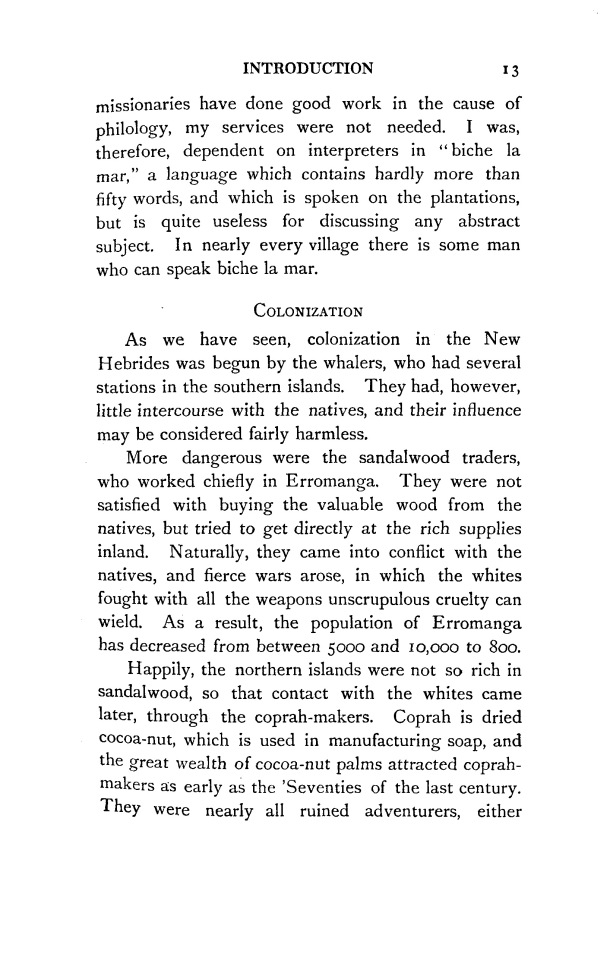|
|  [Note: this transcription was produced by an automatic OCR engine]
INTRODUCTION I 3
missionaries have done good work in the cause of
philology, my services were not needed. I was,
therefore, dependent on interpreters in “biche 1a
mar,” a language which contains hardly more than
fifty words, and which is spoken on the plantations,
but is quite useless for discussing any abstract
subject. In nearly every village there is some man
who can speak biche 1a mar.
COLONIZATION
As we have seen, colonization in the New
Hebrides was begun by the Whalers, who had several
stations in the southern islands. They had, however,
little intercourse with the natives, and their influence
may be considered fairly harmless.
More dangerous were the sandalwood traders,
who worked chiefly in Erromanga. They were not
satisfied with buying the valuable wood from the
natives, but tried to get directly at the rich supplies
inland. Naturally, they came into conflict with the
natives, and fierce wars arose, in which the whites
fought with all the weapons unscrupulous cruelty can
wield. As a result, the population of Erromanga
has decreased from between 5000 and 10,000 to 800.
Happily, the northern islands were not so rich in
sandalwood, so that contact with the whites came
later, through the coprah-makers. Coprah is dried
cocoa-nut, which is used in manufacturing soap, and
the great wealth of cocoa-nut palms attracted coprah-
makers as early as the ’Seventies of the last century.
They were nearly all ruined adventurers, either
|